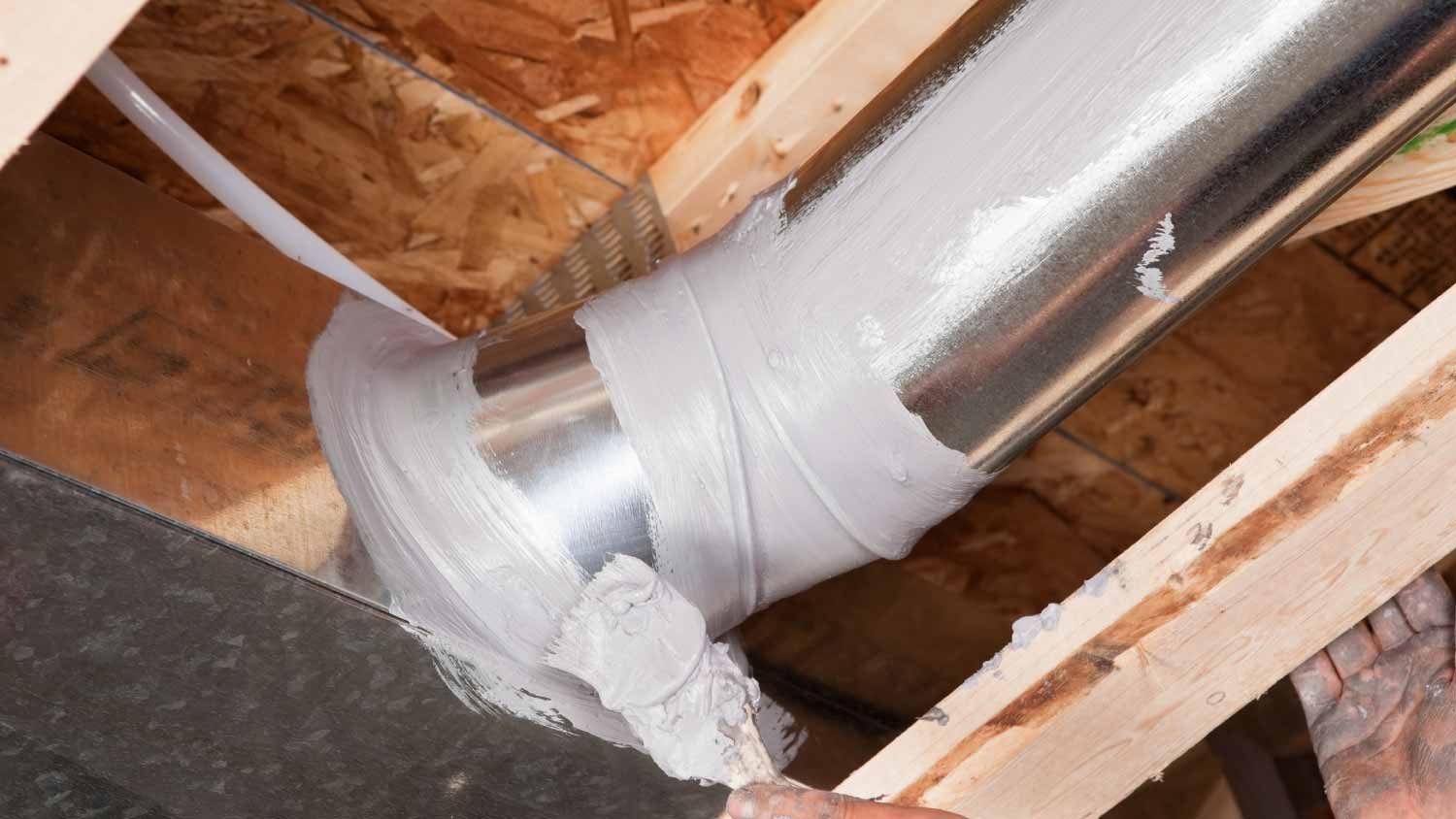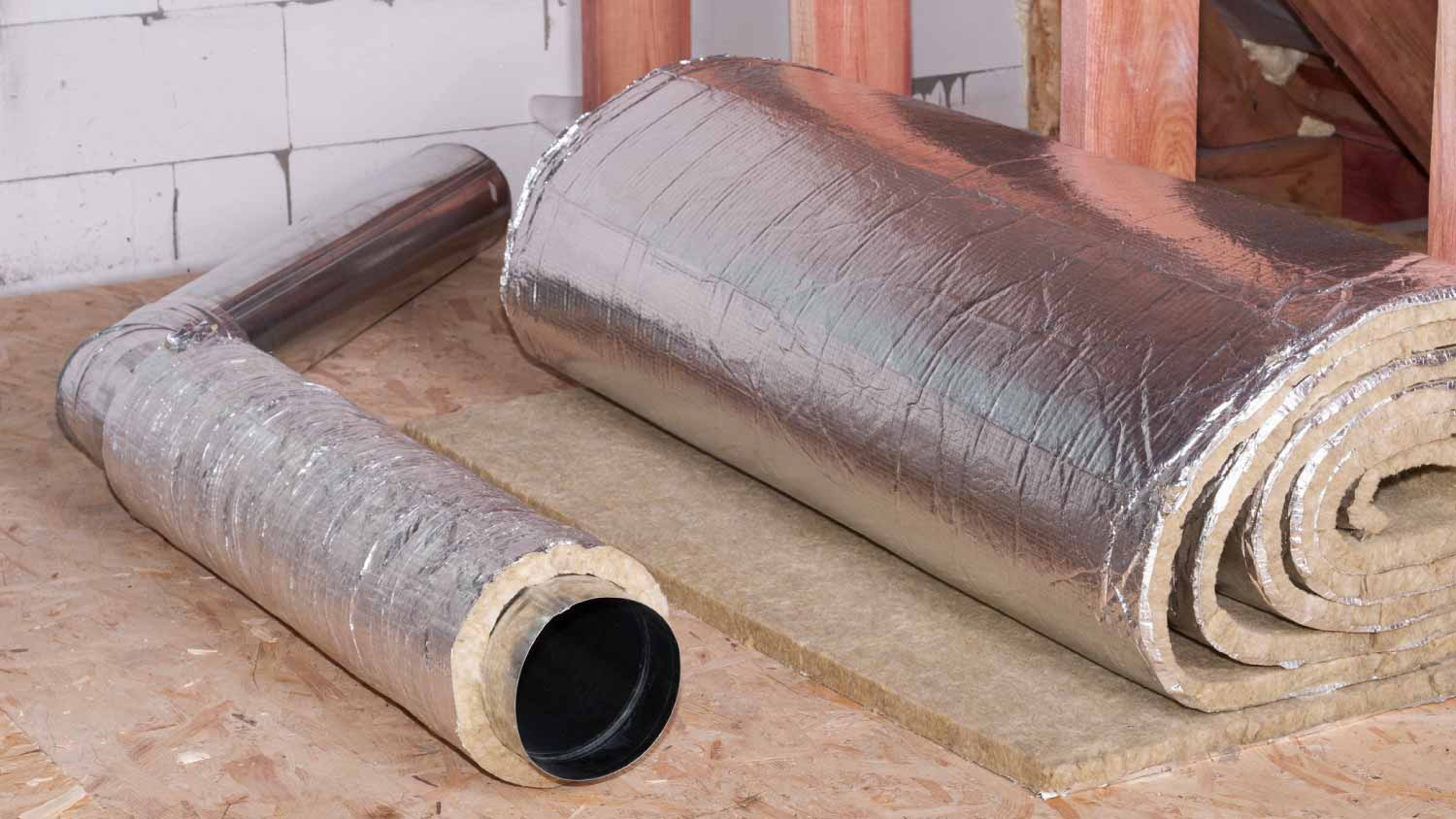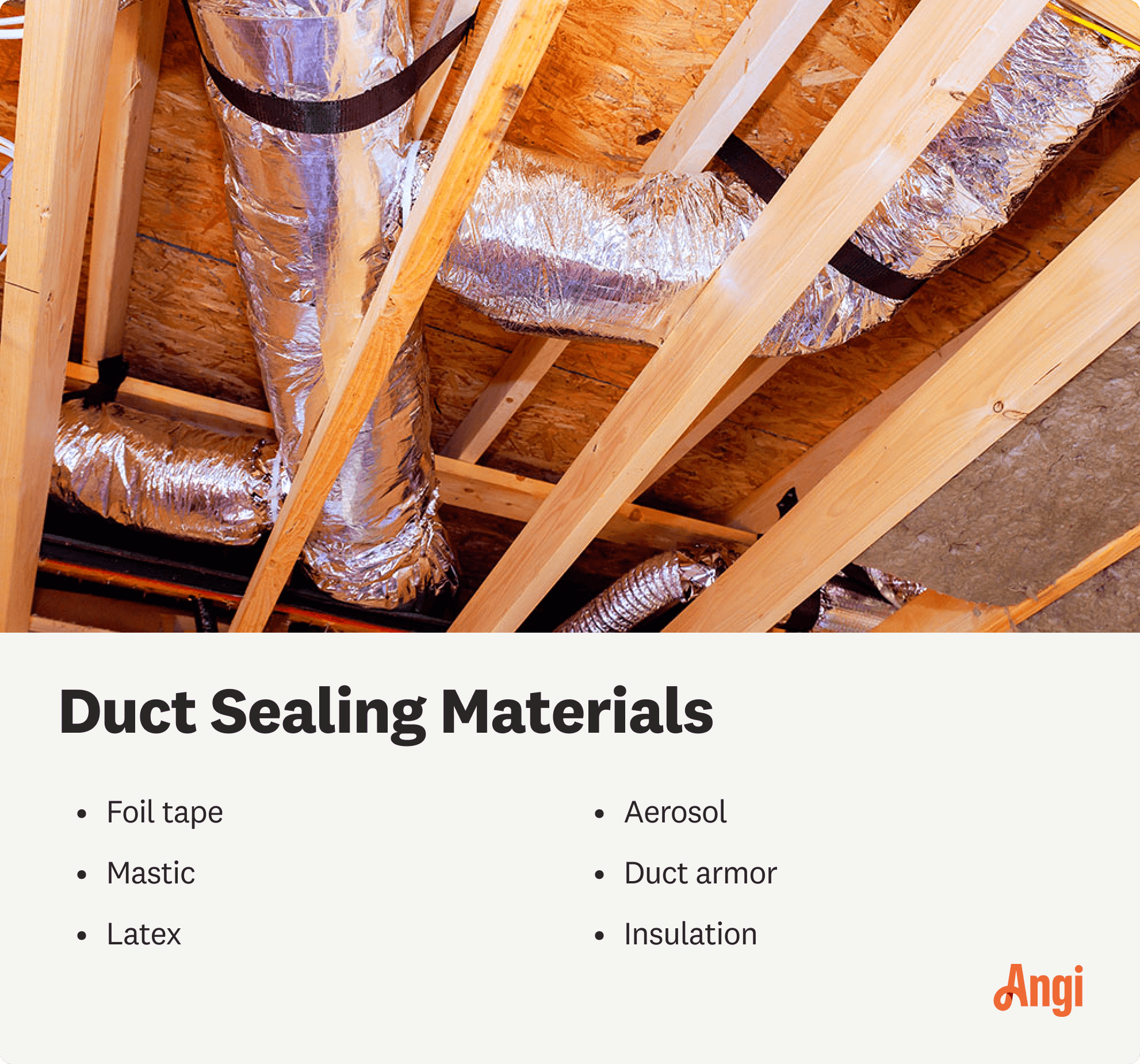
Repairing ductwork in a crawl space is frustrating and difficult, which is reflected in the cost. Learn why limited access results in a premium cost beyond just a simple increase in labor hours.
Cleaner air and energy efficiency start with your ductwork


While duct sealing costs an average of $2,250, a pro can do the job more safely, quickly, and efficiently.
A qualified duct installation pro can ensure a durable, airtight seal that helps improve your HVAC system performance and maximizes energy efficiency.
Advanced duct-sealing methods like Aeroseal require specialized equipment and expertise only pros can handle.
Using the wrong sealant or skipping hard-to-reach ducts can increase energy costs and compromise indoor air quality.
Is your ductwork causing energy loss in your home (i.e. skyrocketing energy bills)? Properly sealed air ducts are crucial for maintaining energy efficiency as well as indoor air quality in your home. While there are several duct sealing methods available out there, some are more effective than others, and some will simply work better with your home’s type of ductwork. Let’s discuss a few of the best methods to help you make an informed decision when it comes to improving the performance of your HVAC system.

A commonly used material for sealing air ducts, foil tape is a flexible adhesive tape made of aluminum and is designed specifically for HVAC applications. This tape is known for its durability and ease of use, making it a popular choice for DIY duct sealing.
Easy to apply and maneuver on flexible ducts
Resistant to temperature fluctuations
Suitable for both small and large ducts
Budget-friendly
May not be as effective for sealing large gaps or holes
Not as long-lasting as other sealing products
Not as aesthetically pleasing as some other sealing methods
Mastic sealant is a versatile duct sealing option that is especially effective in filling gaps and cracks in your ductwork. It is a sticky, putty-like substance that adheres well to various materials commonly used in ductwork.
Excellent at sealing small to medium-sized gaps
Provides a durable, airtight seal
Can be used on various duct materials
Requires more time and effort for application compared to tape
May not be suitable for large holes or extensive damage

Another liquid sealing option, latex sealant is often used for air ducts. It is a water-based sealant that can be easily applied with a caulking gun. Latex sealant is known for its flexibility and adhesion properties.
Excellent adhesion to duct surfaces
Remains flexible, accommodating duct movement
Resistant to moisture and humidity
Takes longer to cure compared to other sealing methods
May not be as effective for large holes or gaps
Aeroseal is a specialized duct sealing method that uses a unique approach to seal leaks in your ductwork. It involves pressurizing the duct system and injecting a sealant into the leaks, effectively sealing them from the inside.
Highly effective at sealing small leaks
Provides a long-lasting, airtight seal
Doesn’t require extensive access to ductwork
Seals from the inside for a more invisible sealing method
Requires professional equipment and expertise
Only addresses duct holes smaller than 5/8 inch
Can be more expensive than other sealing methods
The heavy-duty king of air duct sealing, Duct Armor is basically a protective lining that can be applied to the interior of your ducts. It not only seals leaks but also provides insulation and protection against future duct damage for 15 years or more.
Offers both sealing and insulation benefits
Resistant to moisture and mold growth
Enhances the durability of your ducts
Lasts 15 years or longer
Installation can be labor-intensive
Initial duct sealing cost may be higher than other methods

While it’s not a traditional duct sealing method, air duct insulation can also contribute to sealing your ducts. Insulated ducts are less prone to temperature fluctuations and can help maintain consistent airflow.
Provides insulation benefits in addition to sealing
Helps prevent condensation on air vents and temperature loss
Can improve overall HVAC system efficiency
Installation may require access to the entire duct system
Initial investment can be higher than simple sealing methods
Leaky air ducts in your home contribute to energy waste, poor air quality, and inconsistent indoor temperatures. Here are a few warning signs to watch for:
Uneven heating or cooling: Some rooms may feel too hot or cold despite thermostat settings.
Sudden spike in energy bills: This may indicate that cooled or heater air is escaping through leaks, forcing your HVAC system to work harder.
Excessive dust and poor indoor air quality: Leaks can pull dirt, allergens, and pollutants from attics or crawl spaces.
Strange noises: Whistling or rattling sounds may indicate gaps or disconnections in the ductwork.
Musty odors or increased humidity: Leaks can allow unfiltered air into your home.
Regularly inspecting your ducts and sealing leaks can improve efficiency, enhance air quality, and extend the life of your HVAC system.

Not all of these duct sealing methods are appropriate for every home’s ductwork. When deciding on the best duct sealing method for your specific needs, several factors should be considered.
The type of duct material you have plays a crucial role in determining the most effective duct sealing method. Different types of ductwork—such as metal, fiberglass, or flexible ducts—have different properties and vulnerabilities. Metal ducts, for example, may require different sealants than flexible ducts due to differences in surface texture and rigidity.
Ignoring this factor can lead to inadequate sealing, reduced efficiency, and potential damage to the ductwork over time.
Ducts can be situated in various parts of your home, such as attics, basements, or within walls, each with unique accessibility challenges. Sealing ducts in hard-to-reach places may require specialized tools and techniques.
The location’s environment can also influence your sealing choice, as some sealing materials may be more resistant to moisture or temperature fluctuations. Ignoring duct location can lead to inefficient sealing efforts and potential difficulties in maintaining and repairing the ductwork.
The extent of leaks and damage within your duct system—such as large gaps, extensive cracks, or widespread leaks—should strongly influence your decision. While some sealing methods excel at patching small holes, others are better suited for tackling more extensive damage. Neglecting to consider the extent of the problem can result in an inadequate seal, leaving your ducts vulnerable to ongoing inefficiencies and energy loss.
Before you choose a sealing method for your ductwork, consider your home's energy efficiency needs. Some methods not only seal ducts but also provide insulation, which can significantly impact energy savings. By aligning your sealing method with your energy efficiency goals, you can ensure that conditioned air remains inside your ducts, minimizing energy waste and reducing utility bills.
Of course, your budget is a crucial consideration when selecting a sealing method. Different methods have varying costs, both in terms of materials and labor. While some sealing techniques may offer long-term benefits and energy savings, they could involve a higher initial investment. It's essential to strike a balance between your budget constraints and the desired sealing quality.
The most significant benefit of sealing air ducts is enhanced energy efficiency, which reduces the strain on your HVAC system. Not only does this protect the investment you made in your home, but it also reduces your utility bills.
After sealing, you can expect enhanced indoor air quality by keeping airborne nasties like dust and pollutants out of your living spaces. Overall, duct sealing is a win-win-win, leading to a healthier, more comfortable, and cost-effective home environment.
The cost of duct sealing averages $2,250 but could be as little as $375 to as high as $6,000. The size of your house will play a major factor in this cost, along with how easy it is to access those ducts and just how much of the system is leaking.
The method of duct sealing will also affect the price, with manual duct sealing costing $2,2250 and Aeroseal only costing about $1,300.
Whether you can seal your ducts yourself or need a professional depends on the chosen sealing method and your expertise. Some methods, like applying foil tape, are suitable for DIY projects and require minimal skill. However, more advanced methods, such as Aeroseal, usually warrant professional equipment and expertise. If you're uncertain about the complexity of the task or the extent of duct damage, you should consult with a local duct installer who can assess and recommend the most appropriate sealing approach for your specific situation.
From average costs to expert advice, get all the answers you need to get your job done.

Repairing ductwork in a crawl space is frustrating and difficult, which is reflected in the cost. Learn why limited access results in a premium cost beyond just a simple increase in labor hours.

When your HVAC system is acting up, it could be the blower motor to blame. See how much blower motor replacement costs and what impacts the price here.

The average boiler installation cost depends on size, system type, and other factors. Keep reading to learn the cost of a new boiler.

If you’re thinking about an alternative to a traditional HVAC system, you may want to consider a heat pump. Read on for more about heat pump systems.

Is your heat pump not blowing hot air? Several factors could be causing this issue, and we dive into seven of the most common heat pump issues.

A whole-house humidifier costs between $400 and $800, but can have an ROI of 40%. Learn if adding this HVAC appliance is worth it for you.